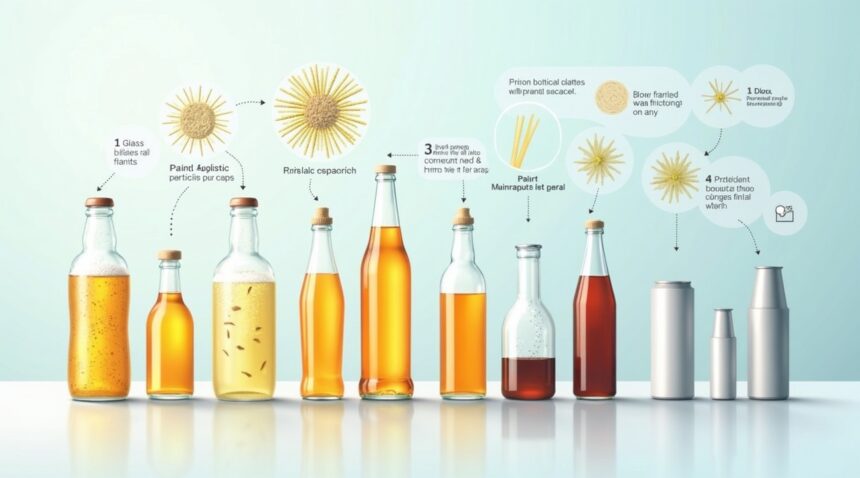A French study by ANSES has revealed a surprising source of microplastic contamination: glass bottles. According to their findings, these containers contain about 100 microplastic particles per liter on average—5 to 50 times more than plastic bottles or metal cans.
Key Takeaways
- High microplastic levels in glass bottles: On average, glass bottles held around 100 microplastic particles per liter, a dramatic increase compared to the lesser levels found in plastic and metal beverage containers.
- Contamination from painted metal caps: The primary source of microplastics was traced to painted metal bottle caps. These caps are coated with plastic-based paint that sheds microplastic particles due to friction during transport and storage.
- Variation by beverage type: Levels of contamination differed depending on the beverage. Water showed the lowest levels, while sugary drinks like cola, lemonade, iced tea, and beer contained up to 100 particles per liter in glass bottles.
- Simple cleaning can reduce contamination: A straightforward three-step cleaning protocol—consisting of a blow-out, rinse with water, rinse with ethanol, and a final water rinse—can cut microplastic content by about 60%.
- Health risks remain uncertain: While contamination is documented, researchers lack sufficient toxicological data to determine the actual health risks microplastics may present to consumers at these levels.
To read the complete findings and methodology, visit the official ANSES website.
Glass Bottles Contain 100 Microplastic Particles Per Liter, Study Reveals
A groundbreaking study by the French food safety agency ANSES has shattered conventional wisdom about beverage packaging safety. After examining 56 beverage samples across multiple drink categories, researchers discovered glass bottles contained approximately 100 microplastic particles per liter on average — a shocking finding that defies expectations about glass packaging.
ANSES Study Reveals Unexpected Contamination Levels
The contamination levels found in glass bottles proved dramatically higher than alternative packaging methods. Glass containers showed 5 to 50 times more microplastic particles compared to plastic bottles or metal cans. This startling discovery emerged from research published in the Journal of Food Composition and Analysis in 2025, conducted by the Boulogne-sur-Mer unit of the ANSES Laboratory for Food Safety.
Guillaume Duflos led the comprehensive investigation, with PhD student Iseline Chaib conducting the primary research. Chaib expressed genuine surprise at the outcomes, stating, “We expected the opposite result.” The research team had anticipated glass would demonstrate superior safety profiles compared to plastic alternatives, making these findings particularly significant for consumer safety discussions.
First Comprehensive Analysis Challenges Industry Assumptions
This study represents the first comprehensive examination of microplastic contamination across a wide range of beverages sold in France. The research challenges deeply held assumptions about glass being a safer alternative to plastic packaging. Industry professionals and consumers alike have long considered glass containers the premium choice for avoiding plastic contamination.
The findings force a reconsideration of packaging safety hierarchies that have guided consumer choices for years. Glass manufacturers and beverage companies may need to investigate potential contamination sources within their production processes. The study’s methodology examined various beverage categories, ensuring the results apply broadly across different drink types rather than isolated product lines.
These results don’t necessarily condemn glass packaging entirely, but they highlight the complex nature of microplastic contamination in food and beverage systems. Environmental factors, manufacturing processes, and storage conditions all potentially contribute to particle levels found in finished products. The research emphasizes the need for continued investigation into packaging safety across all material types.
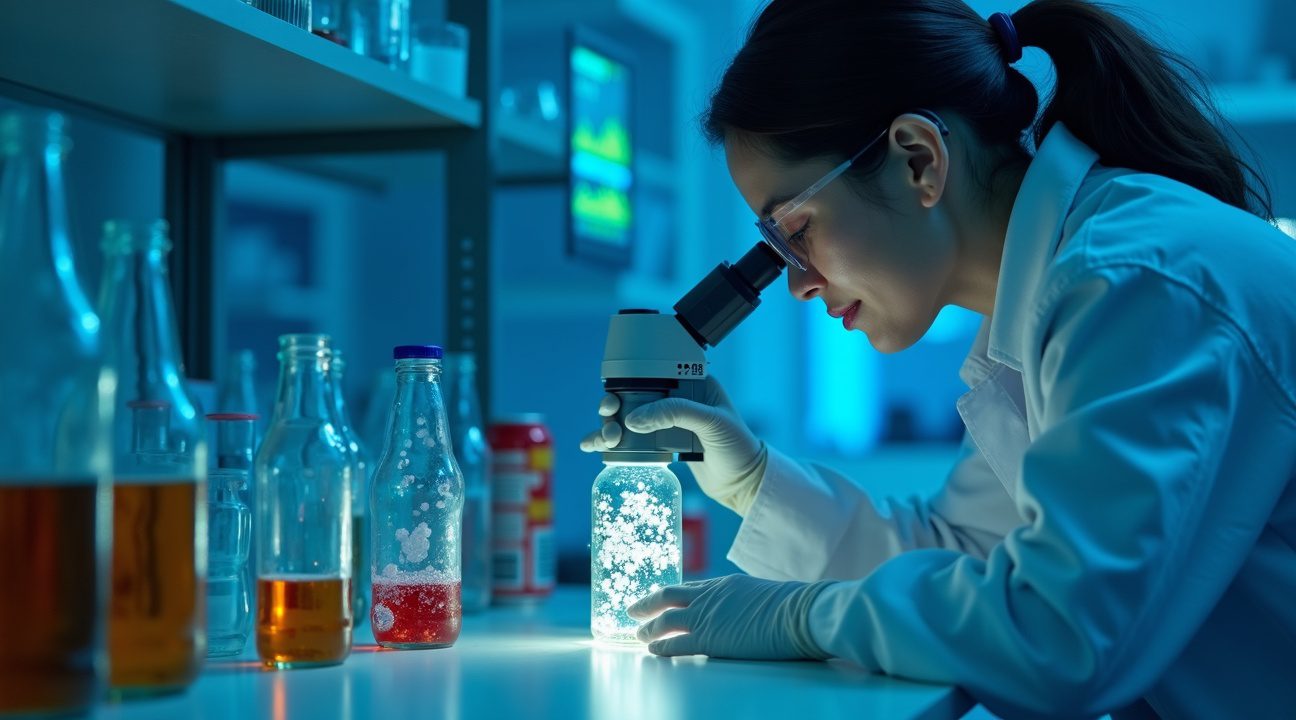
Painted Metal Caps Identified as Primary Contamination Source
The research team uncovered a surprising culprit behind microplastic contamination in glass-bottled beverages: the plastic-based paint coating found on metal bottle caps. This discovery challenges common assumptions about glass containers being completely plastic-free alternatives to traditional plastic bottles.
How Cap Paint Creates Microplastic Contamination
Microscopic scratches develop on bottle caps during routine storage and transportation processes, creating an invisible pathway for contamination. These tiny abrasions occur when bottles rub against each other or storage surfaces, causing friction between adjacent caps. This mechanism is particularly concerning because it happens throughout the supply chain, well before consumers purchase their beverages.
The paint particles that flake off from these damaged surfaces eventually fall directly into the beverage during two critical moments:
- When manufacturers seal the bottles
- When consumers open them
This contamination process operates continuously, meaning longer storage periods potentially lead to higher microplastic concentrations in the final product.
Scientific Confirmation Through Spectroscopic Analysis
Advanced spectroscopic analysis provided definitive proof that cap paint serves as the contamination source. Researchers compared the microplastic particles found in beverages with samples from the bottle caps themselves, revealing identical characteristics across multiple parameters.
Chaib emphasized that the particles “emerging from the samples were the same shape, colour and polymer composition—so therefore the same plastic—as the paint on the outside of the caps.” This conclusive evidence eliminates any doubt about the contamination pathway. The paint coating consists mainly of polyester, which creates distinct polymer signatures that researchers can easily identify through laboratory testing.
Friction emerges as the primary mechanism driving this contamination process during normal handling procedures before products reach consumers. The constant movement and contact between bottles during shipping, warehousing, and retail display creates ongoing opportunities for paint degradation. Each handling event potentially generates additional microplastic particles that accumulate in the beverage over time.
This finding represents a significant breakthrough in understanding how seemingly safe glass containers can still introduce plastic contamination into beverages. Manufacturers now face pressure to develop alternative cap designs or coating materials that won’t shed microplastics during normal use and handling.
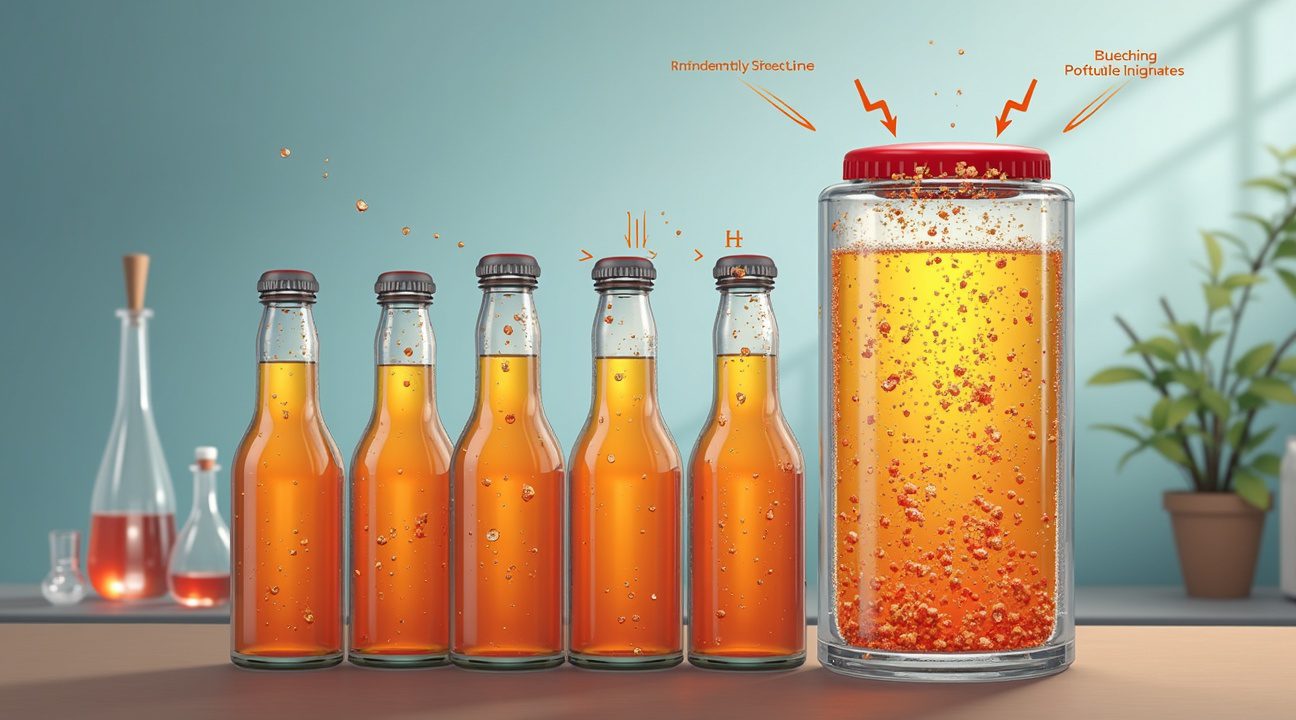
Contamination Levels Vary Dramatically Across Beverage Types
I discovered through this research that microplastic contamination levels differ substantially depending on what you’re drinking. Water shows relatively modest contamination at 4.5 microplastic particles per liter in glass bottles, compared to just 1.6 particles per liter in plastic containers. This finding challenges conventional assumptions about glass being the cleaner option.
Soft drinks present a more concerning picture, averaging 30 particles per liter across glass packaging. Lemonade reaches 40 particles per liter, while beer contains approximately 60 particles per liter. The most alarming results come from beverages like cola, lemonade, iced tea, and beer stored in glass bottles, where contamination levels approach 100 particles per liter.
Wine Emerges as Unexpected Exception
Wine presents an intriguing anomaly in this contamination pattern. Despite being packaged in glass bottles with plastic-coated caps, wine consistently shows the lowest microplastic levels among all tested beverages. This unexpected finding puzzles researchers, as the protective mechanism remains unclear. Chemical interactions between different beverage types and their packaging materials appear to influence contamination patterns significantly.
Water maintains relatively low contamination levels regardless of whether it’s stored in glass or plastic containers. This consistency suggests that water’s simple chemical composition might limit interactions that lead to microplastic release. However, the dramatic variations seen in other beverages indicate that specific chemical properties of each drink type play a crucial role in determining final contamination levels.
The stark differences between beverage types highlight how packaging material alone doesn’t determine microplastic contamination. Acidic drinks like lemonade and cola may react differently with glass surfaces compared to neutral beverages like water. Beer’s fermentation byproducts could potentially influence how microplastics migrate from packaging materials into the final product.
These findings suggest that consumers can’t simply switch packaging types to avoid microplastic exposure. Instead, the beverage choice itself significantly impacts potential contamination levels. While researchers continue investigating the underlying mechanisms, these results demonstrate that both packaging material and beverage chemistry contribute to microplastic contamination in complex ways that current understanding hasn’t fully explained.
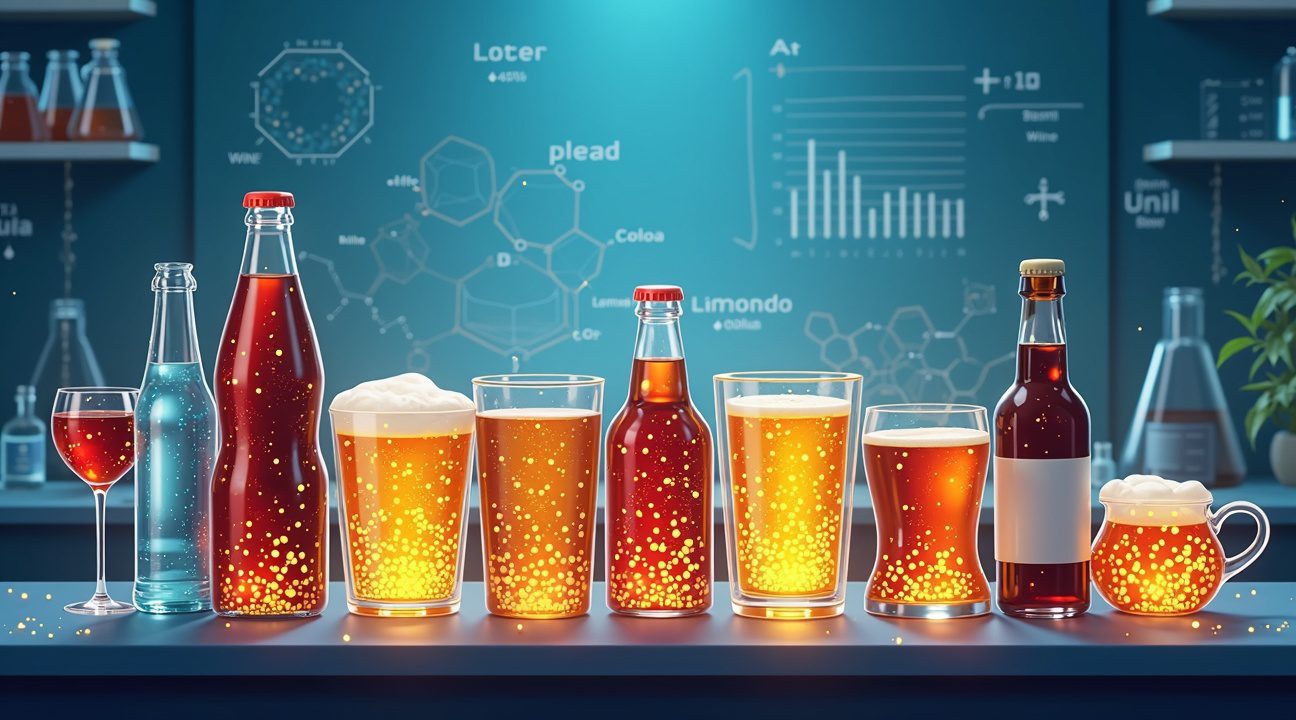
Pre-Cleaning Solution Reduces Contamination by 60 Percent
Researchers have identified a straightforward method to dramatically reduce microplastic contamination in glass bottles through proper pre-cleaning protocols. The study revealed that implementing a systematic cleaning approach for bottle caps before sealing can cut microplastic levels by approximately 60 percent, offering manufacturers an immediate solution to address this contamination issue.
Simple Three-Step Cleaning Protocol
The recommended cleaning method follows a specific sequence that manufacturers can easily integrate into existing production lines. The process begins with blowing out the caps to remove loose particles and debris that might contribute to microplastic contamination. Following this initial step, workers rinse the caps using a water/ethanol/water sequence, which effectively removes microscopic plastic particles that standard cleaning methods might miss.
This protocol’s effectiveness stems from its systematic approach to removing different types of contaminants:
- The initial blow-out step eliminates larger particles.
- The ethanol component in the rinse sequence dissolves organic residues and helps dislodge embedded microplastics that water alone cannot remove.
- The final water rinse ensures complete removal of the ethanol solution and any remaining loose particles.
Significant Impact on Manufacturing Standards
Researchers quantified the pre-cleaning approach’s effectiveness and found it lowers microplastic loads by a factor of three compared to standard bottle preparation methods. This reduction represents a substantial improvement that manufacturers can achieve without major equipment investments or complex process modifications.
The study specifically targets glass bottle producers because the findings suggest that contamination occurs primarily during the bottling process rather than through the glass material itself. Implementation of this cleaning protocol requires minimal additional time and resources, making it particularly attractive for manufacturers concerned about production efficiency.
The three-step process can be incorporated into existing quality control procedures without disrupting established workflows or requiring specialized equipment beyond what most facilities already possess.
The research team tested multiple variations of the cleaning sequence to optimize effectiveness while maintaining practical feasibility for industrial applications. Their findings demonstrate that even this relatively simple intervention can produce measurable improvements in product quality and consumer safety.
Manufacturing facilities that adopt this protocol can immediately begin reducing the microplastic content in their bottled products while maintaining current production speeds and volumes.
Glass bottle manufacturers now have concrete evidence that source-level interventions can significantly impact final product quality. The study’s recommendations provide a clear pathway for companies to address microplastic contamination proactively, potentially avoiding more complex and costly solutions that might emerge from future regulatory requirements. Early adoption of these cleaning protocols positions manufacturers ahead of industry standards while demonstrating commitment to product safety and environmental responsibility.
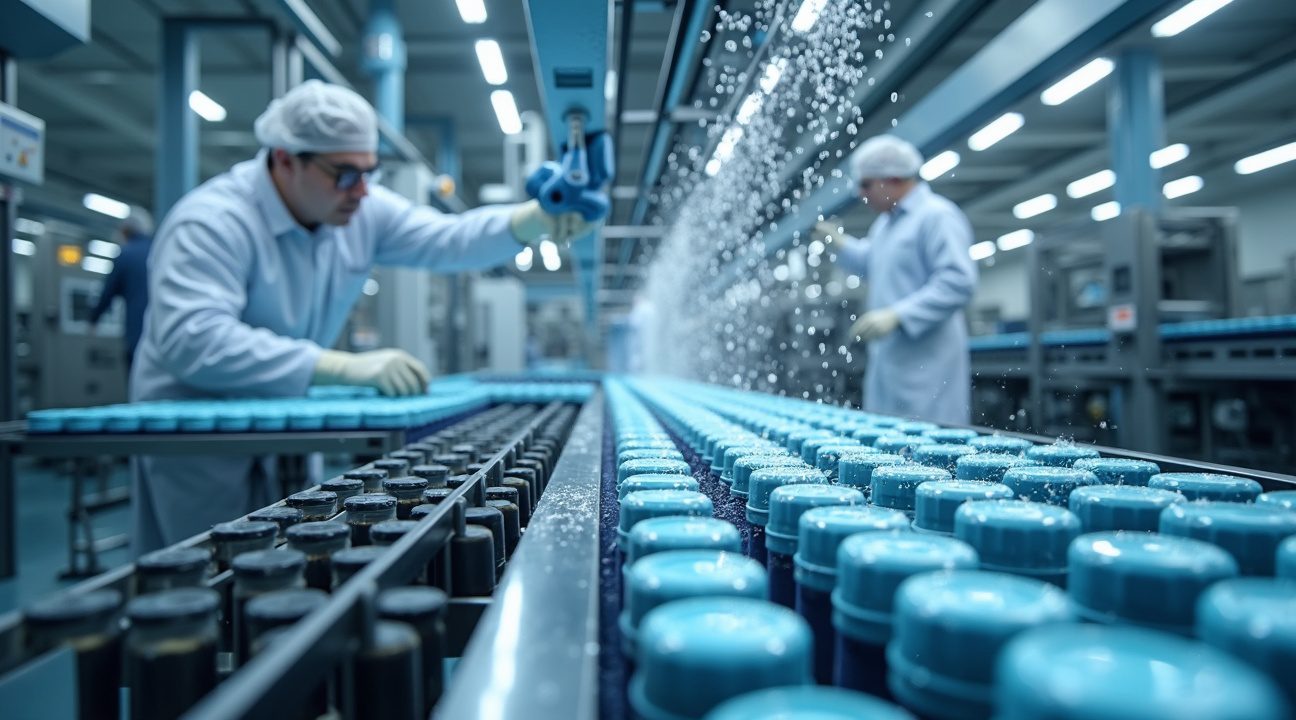
Study Challenges Consumer Assumptions About Glass Safety
Marketing campaigns have spent decades positioning glass packaging as the premium choice for health-conscious consumers. I’ve observed how companies consistently promote glass containers as cleaner, greener, and safer alternatives to plastic, creating a widespread belief that glass automatically reduces exposure to harmful pollutants. This messaging has shaped purchasing decisions across countless households, with many people specifically choosing glass-bottled beverages to avoid potential contamination.
The recent study’s findings turn these long-held assumptions upside down. For the first time, researchers have documented a contamination pattern in commercial beverages that directly contradicts consumer expectations about glass safety. I find these results particularly striking because they challenge fundamental beliefs about packaging materials that have influenced consumer behavior for generations.
Comprehensive Analysis Reveals Unexpected Results
The research team conducted an extensive analysis of everyday beverages that consumers regularly purchase and consume. Their investigation included several popular drink categories:
- Water bottles from various brands
- Cola and other carbonated soft drinks
- Lemonade and citrus-flavored beverages
- Iced tea products across different manufacturers
- Wine from multiple vineyards and regions
- Beer from various breweries and styles
I appreciate how the researchers examined four distinct container types to create a comprehensive comparison. They tested glass bottles, plastic bottles, cartons, and metal cans to establish clear contamination patterns across the beverage industry. This approach provides valuable insights that extend beyond simple glass-versus-plastic comparisons.
The study’s methodology strengthens its credibility significantly. Rather than focusing on a single beverage type or limited container options, the researchers created a broad sample that reflects real-world consumer choices. I consider this comprehensive approach essential for understanding how different packaging materials perform across various beverage formulations and storage conditions.
These findings force both consumers and industry professionals to reconsider established safety profiles of packaging materials. The beverage industry has operated under certain assumptions about glass superiority for years, and these results suggest that manufacturers may need to reevaluate their packaging strategies. I believe this research opens important discussions about how materials science intersects with food safety regulations.
The implications extend beyond immediate health concerns to include broader questions about environmental impact and sustainability claims. Glass has long been marketed as an environmentally responsible choice, but if safety concerns emerge, consumers must weigh multiple factors when making purchasing decisions. This complexity adds new dimensions to conversations about sustainable packaging solutions.
I notice how this study’s counterintuitive findings highlight the importance of evidence-based decision making in both consumer choices and industry practices. The research demonstrates that intuitive assumptions about material safety don’t always align with scientific evidence. This disconnect between perception and reality underscores the need for continued testing and transparency in packaging safety research.
The timing of these findings coincides with increased public awareness about microplastic contamination in food and beverages. Consumers have become more vigilant about potential health risks, making this study’s revelations particularly relevant to current market trends. I expect these results will influence both regulatory discussions and consumer behavior patterns in the coming months.
These discoveries also raise questions about testing protocols and quality assurance measures across the beverage industry. If glass containers are releasing higher levels of microplastics than previously understood, manufacturers may need to implement new testing procedures and potentially modify their production processes. The research suggests that assumptions about material safety require regular validation through scientific investigation.
Health Implications Remain Unclear Despite Contamination Evidence
The discovery of microplastics in glass-bottled beverages raises important questions about consumer safety, yet researchers can’t definitively answer whether these particles pose health risks. The study confirms contamination exists, but it stops short of establishing direct health consequences from consumption.
Currently, toxicological reference data remains insufficient for scientists to draw concrete conclusions about potential health effects. This data gap represents a significant challenge in the field, as researchers lack the foundation needed to assess risk levels or establish safety thresholds for microplastic consumption.
Widespread Plastic Contamination Beyond Beverages
Microplastics have infiltrated virtually every aspect of modern life, appearing in environments and products far beyond glass bottles. Detection occurs regularly in:
- Air samples from both urban and remote locations
- Food products across various categories
- Water sources including tap and bottled varieties
- Human tissues and biological samples
- Common household items like toothbrushes and teeth aligners
- Personal care products including chewing gum
This contamination pattern reveals how extensively plastic particles have spread throughout our environment and daily routines. The sources contributing to this widespread presence include both the breakdown of larger plastic objects over time and direct industrial applications such as protective coatings, packaging materials, and synthetic textiles.
Research priorities have shifted significantly as scientists recognize the scope of human exposure. Previously, marine environments dominated microplastic studies, but investigators now focus increasingly on understanding how people encounter these particles through food and beverages. This shift reflects growing awareness that microplastic exposure represents a human health concern rather than solely an environmental issue.
The pervasiveness of plastic contamination extends to items people use daily without considering potential exposure. Toothbrushes release particles during normal use, while teeth aligners can shed microscopic plastic fragments into the mouth. Even chewing gum contributes to microplastic consumption, highlighting how routine activities may introduce these particles into the human body.
Understanding exposure pathways becomes crucial as research continues. Glass bottles, traditionally viewed as safer alternatives to plastic packaging, now join the list of potential microplastic sources. This finding challenges assumptions about material safety and suggests that contamination occurs through multiple mechanisms beyond direct plastic contact.
The industrial origins of microplastics complicate efforts to address contamination. Coatings applied to glass surfaces, adhesives used in labeling, and processing equipment all contribute plastic particles to products. Additionally, synthetic textiles release fibers during washing, while packaging materials degrade during storage and transportation.
Detection methods continue improving, allowing researchers to identify smaller particles and trace contamination sources more precisely. However, the absence of standardized measurement protocols makes comparing studies difficult. Different laboratories use varying techniques, particle size ranges, and identification criteria, creating inconsistencies in reported contamination levels.
Consumers face uncertainty while research progresses. The current evidence confirms microplastic presence in glass-bottled beverages but doesn’t establish whether this contamination threatens health. Scientists need comprehensive toxicological studies to determine safe exposure levels and identify potential adverse effects from chronic consumption.
The research community continues investigating how microplastics interact with human physiology once consumed. Preliminary studies suggest particles can cross biological barriers and accumulate in tissues, but long-term consequences remain unknown. This knowledge gap persists across different particle sizes, chemical compositions, and exposure durations.
Environmental contamination appears widespread and increasing, making complete avoidance challenging for consumers. The presence of microplastics in glass bottles demonstrates that even premium packaging options don’t eliminate exposure. This reality emphasizes the need for systematic research to understand health implications rather than relying on assumptions about material safety.
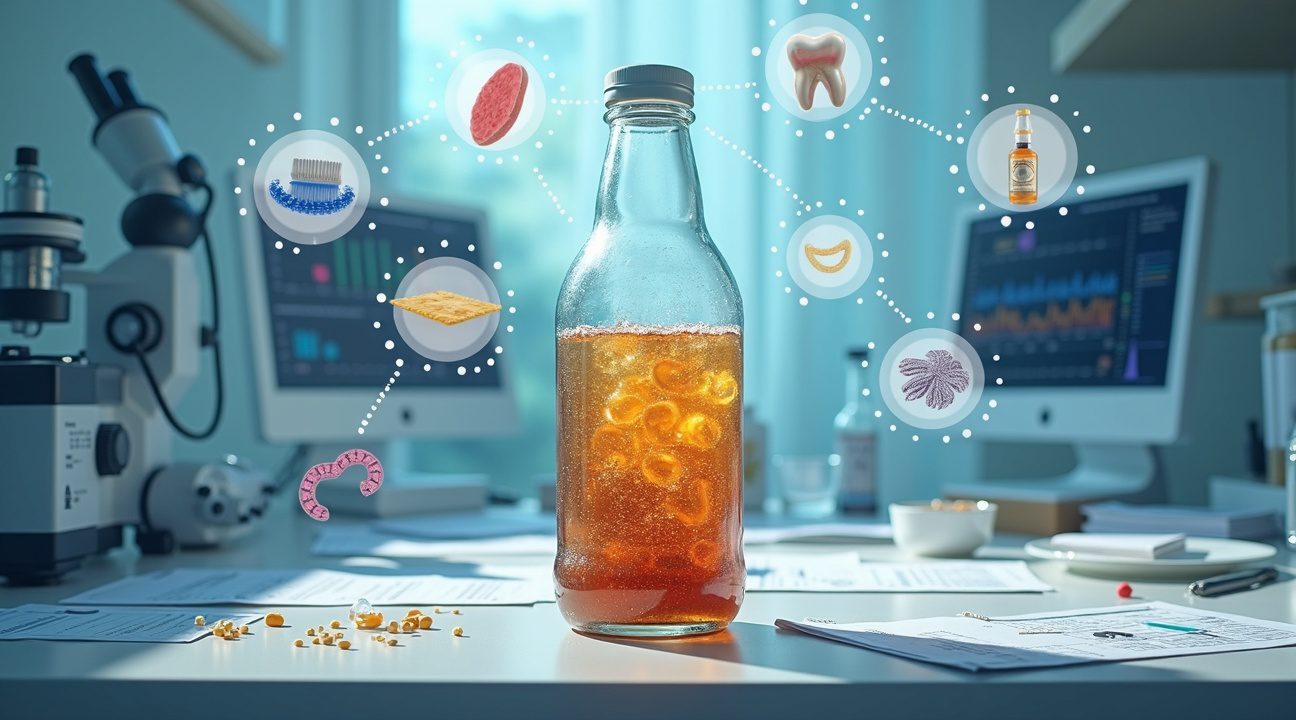
Sources:
Technology Networks: “Drinks in Glass Bottles Contain More Microplastics Than Those Plastic Bottles”
New Food Magazine: “Study finds glass bottles contain far more microplastics in drinks than plastic bottles” by Ben Cornwell, June 23, 2025
Plastics Today: “The Glass Bottle Is Half-full . . . With Microplastics” by Norbert Sparrow, June 23, 2025
WINS Solutions: “Glass Bottles Contain More Microplastics Than Plastic Ones”
Phys.org: “Glass bottles found to contain more microplastics than plastic bottles”
Texas Chemistry: “Glass Bottles May Contain More Microplastics than Plastic”
ANSES (French Food Safety Agency): “The caps of glass bottles contaminate beverages with microplastics”
New Atlas: “Microplastics in drinks: glass bottles vs plastic and cans”
Modern Sciences: “In a twist, study finds more microplastics in drinks from glass bottles” July 2025
Journal of Food Composition and Analysis (original study publication)
Royal Society of Chemistry: “Characterization of microplastics in water bottled in different” by I. Gambino, 2023
FEVE (European Container Glass Federation): “European glass packaging industry responds to ANSES study on” 2025
Agence France Presse (AFP) reporting via France 24

